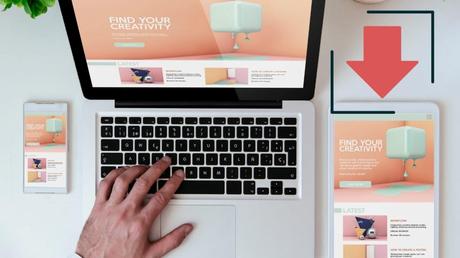
Did you know that 39 percent of people will stop engaging with content if you make them wait for it to load? A slow site leads to a poor user experience. This is one statistic of many that shows how valuable UX/UI design is when it comes to website experience and SEO performance.
In fact, for every $1 invested in user experience, you can expect to return $100 on average. That’s money well spent!
Despite this, a lot of business owners are failing to join the dots between UX and SEO. They believe that search engine optimization is just about links and keywords, whereas UX/UI design revolves around making things look pretty.

However, an integrated strategy has long been the key to online success, and when it comes to SEO and UX, the bond is vital.
- Is your site secure?
- How long does it take to load?
- Does your site function perfectly on a smartphone?
- Do you have exciting content on every page?
All of these components impact the experienced users on your website. And guess what? The experience your website provides influences how Google ranks it!
If your website takes too long to load, most time-poor people today will simply hit the back button and head to a rival website instead. This contributes to your bounce rate increasing, and Google won’t like that!
Understanding User Experience (UX) and User Interface (UI) design
User experience (UX) refers to every interaction someone has when they are on your website. It is about ensuring that every part of their journey is as seamless and enjoyable as possible.
User interface (UI) design is the process designers use when creating an interface, such as your website homepage. This is very much focused on style or looks.
A lot of people use the two terms interchangeably. They are not the same. Both elements are critical to the success of your website. However, UI is just a part of UX, focusing purely on cosmetics.
Using UX Design Tools to Achieve an Incredible User Experience
User experience has become so integral to the success of any product that there are so many UX design tools for designers today.
Such tools help designers to create prototypes and layouts, determine how a user will flow through your website, and structure information.
They also help you to assess current user behavior so that you can make adjustments. You will notice that most of these tools have SEO elements, and this is because UX and SEO are now so critical to one another.

The Importance of UX/UI Design For Your SEO
Over the years, Google has changed considerably. The search engine giant updates its algorithms on a consistent basis to make sure users experience the most accurate and beneficial results.
Whenever Google makes an update, it always does so with the purpose of making its results more user-friendly and user-focused.
You only need to look at the introduction of rich snippets and knowledge panels to see how changes in SERPs and algorithm updates are really putting the user experience first.
Common Goals: SEO And UX/UI Design
You also need to consider that SEO and UX are intertwined because they share common goals.
We have moved away from purely ranking for search terms in recent times. Instead, search engines want to provide searchers with specific information that answers the problem they face. This is where we see SEO and UX begin their interaction.
Both have the common objective of helping people to complete tasks or get answers by supplying them with relevant information.
SEO leads a searcher to the content they require while UX answers their queries once they are on the webpage.

UX design elements and decisions that impact SEO
Now, let’s delve a little bit deeper by taking a look at some different design elements and how the decisions you make in terms of UX design will influence your SEO performance:
- Add a ‘review’ or ‘comments’ section to your website
It is not hard to understand why adding a ‘comments’ section to your website makes sense from a UX standpoint. After all, it adds unique content to your website from your customers, which can help them to make decisions on whether or not to use your products or services.
How does this UX design element impact SEO?
- Reviews and comments act as social proof, which Google can use in rich snippets
- Users create content free of charge, which you can use to extend text volume on your webpages
- Every new review or comment updates the page and refreshes its content
User Input Elements
A lot of pages on your website will be information-rich and static. Some, though, will require users to input information and will focus on interaction.
For example, the contact page can require people to fill in their contact information and type their query, whereas the payment pages will require numerous pieces of information to complete a transaction.
How does this UX design element impact SEO?
Well, if you make input sections long-winded or difficult, people will get frustrated and they will go elsewhere. This will only hurt your search engine ranking.
Some of the things you can do to create helpful forms that guide people through the journey swiftly and boost your SEO performance are as follows:
- Use inline validation to inform users if their data is correct in real-time
- Make input fields convenient and large on mobile screens
- Match keyboard to input on mobile screens
- Input masks and use placeholder text to help people correctly fill in forms
- Use auto-completion and preset values to help people fill in forms quickly
- Only ask what is needed; extra fields in forms are proven to lower conversion rates

Featured or Related Products/Services
At the bottom of a blog or product page, you will typically see additional navigation widgets. These widgets help automate internal linking on your site.
Your website visitors love them because they are able to see related suggestions, so they may end up finding something that they love.
How does this UX design element impact SEO?
SEO experts also love related or featured services/products because they interlink a group of related products or posts, and this is super helpful for optimization.
Faceted Navigation With UX/UI Design
Large online stores with extensive inventories will typically implement sorting and filtering features in their product listings. Faceted navigation is used to either reorder items in the list or help users narrow down the list of available products.
Such capabilities are important because they enable users to quickly and easily find the products they need, but you do need to carefully consider this from an SEO perspective as well.
How does this UX design element impact SEO?
Faceted navigation can add complications from an SEO perspective. We’re not saying you shouldn’t use it. However, you do need to consider your options carefully.
There are usually two approaches available:
- Use JavaScript code – This will change the product list dynamically, without the page being reloaded. Users can view sorted or filtered lists on the same URL.
- Reloading the page Alternatively, you can reload the page every time, with sorted or filtered items being displayed via a separate URL. with this, an infinite number of indexable URLs are added to the site.
The latter problem may sound appealing. More content, right? Well, it actually creates the issue of duplicate content. This harms your SEO ranking because signals are diluted into numerous URLs.
Above-The-Fold Content
Finally, above-the-fold content is the first thing people will see when they land on your website.
It tends to include:
- The main menu
- CTA
- Headline
- Hero image
- Logo
- Website name
From a design perspective, there are homepage templates for pretty much any industry available via content management systems today. Include all structural elements and follow best practices to ensure your website is appealing and makes sense to the viewer.

How does this UX design element impact SEO?
With regards to SEO, it is not only vital to what information a viewer sees once the page loads but how fast they are able to see it.
After all, the visual loading speed of a webpage is now a ranking factor, so Google will directly take this into account.
Respecting the Relationship Between UX/UI Design and SEO
So there you have it: everything you need to know about the link between UX/UI design and SEO.
We hope that this has helped you to get a better understanding of the different reasons why UX design decisions must be considered from a search engine optimization standpoint as well.
Once you start considering UX, UI, and SEO together, you can really give your website the platform it needs to flourish.
What have you done recently with your UX/UI design to help your user experience? I’d love to hear more from you in the comments below.

